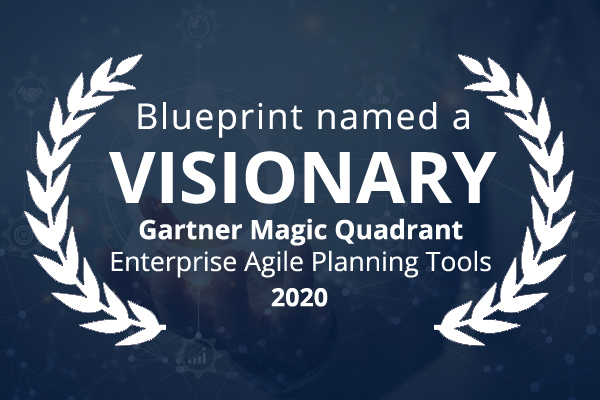Top 7 Predictions for RPA in 2022
It’s that time of the year again. As we wind down 2021, we begin looking to the future, forecasting and anticipating what the new year will have in store.
With that in mind, here’s this year’s installation of our top 7 predictions of how the RPA market will unfold and evolve in 2022.
1. Expect More RPA Platform Migrations
In late 2020, we predicted that in 2021 RPA platform migrations would be a common event, and the year didn’t disappoint.
Competitive account transitions between RPA vendors were a-plenty as RPA programs looked to other providers to solve several issues with their current vendors, including:
- Underwhelming returns with their current vendors
- Increased time to bot deployment with less complex solutions
- Better pricing options or at least a reduction on their growing automation overhead
We’ve continued to see a lot of movement between RPA vendors in 2021, with migrations ranging from smaller portfolios of bots to massive digital workforces. Case in point, we helped one of our customers migrate 15,000 task bots from Automation Anywhere to Microsoft Power Automate (read all about it here).
If you’re interested in migrating your digital workforce to another platform, Blueprint has an RPA platform migration solution that accelerates switching by 3x while reducing costs by 75%. We can even provide you with a free migration estimate, no strings attached.
2. There Will Be More RPA Vendor Consolidation
According to Gartner, the RPA software market has grown significantly in recent years, with roughly 60 vendors at the moment.
We project that there won’t necessarily be a big uplift in newcomers. The dominance of the big four (Microsoft Power Automate, UiPath, Blue Prism, and Automation Anywhere) will stay intact as they continue to jockey for position at the top. However, we anticipate more specialization, consolidation, and niche use cases as existing providers make a strategic play in the RPA software segment.
For example, we’ve already seen major enterprise software providers like Salesforce and SAP adding automation capabilities to consolidate their current market share and meet an evolving market and changing user expectations
We’re also seeing existing platforms focusing on specific lines of business, like automation for finance, HR, IT, etc. We expect this trend of specialization and consolidation to only continue in 2022.
3. Hyperautomation Will Continue to Gain Pace
Hyperautomation continues to hold a spot as a top strategic trend across industries.
While scale has been challenging to accomplish, the returns from task automation have been significant. Organizations now want to take that next step forward by automating more complex processes with artificial intelligence (AI) and machine learning (ML) by implementing end-to-end automation toolchains.
4. There Will be Increased Application of Semantic Automation
Semantic automation is another strategic trend that’s getting ready for prime time. It’s a departure from developer-led rules-based task automation.
Semantic automation is where a process or task is observed, and bots learn to emulate the process without explicit instruction or coding. Using AI and machine learning technologies like OCR (optical character recognition), business users can spearhead automation implementation by triggering semantic bots to perform a task or process, getting closer to the scale so many RPA programs are after.
5. Scaling RPA Will Continue to be Elusive
With every passing year, RPA programs continue to mature and build on their portfolio of bots, but it hasn’t been a smooth road.
The ease of implementation was over-promised. RPA platforms for the most part are complex development environments. Automation teams are struggling to meet their objectives and the business’ expectations as they’re hard-pressed to deliver automated processes at a quicker rate.
While RPA programs are adopting more key solutions to accelerate and democratize automation design, improve RPA standardization and governance, and mitigate break-fix cycles with proactive change management, the scale desired will continue to be a challenge into 2022.
6. IT and CoEs will Penetrate Automation Even More
The citizen developer approach simply hasn’t panned out. RPA development is a complex endeavour. With RPA platform migrations becoming more common, IT will be leaned on even more to drive and manage the technical aspects of automation and switching RPA vendors.
As automation programs mature, organizations are adopting a centralized, federated structure known as an RPA Center of Excellence (CoE) to streamline automation delivery and contribute to that sought-after scale.
7. Physical Automation is About to Take Off
The pandemic continues to influence and drive automation’s adoption. While all businesses have been impacted, the service industry continues to be at the whim of an ever-changing reality. One big challenge they face is a clear shortage of workers.
Still in the early stages, physical automation in the form of robots will ramp up in 2022, and investment will increase as service companies look to combat challenging conditions and trends brought on by the pandemic.
Even with the noted challenges, 2022 promises to see more growth in the RPA market with exponential application to more business areas, with complex automation becoming much more attainable.
One thing is for certain, automation and RPA are no longer buzz words. They hold a prominent place in the enterprise tech stack and will only increase in prominence as move into 2022 and beyond.
Want to learn more? Check out our Resource Library and browse through all the whitepapers, on-demand webinars, brochures, infographics and more that we have on offer.
Share this
Recent Stories

The Top 6 Automation Predictions for 2023

5 Takeaways From Our Recent RPA Migration Panel: Who Moved My Bots?




